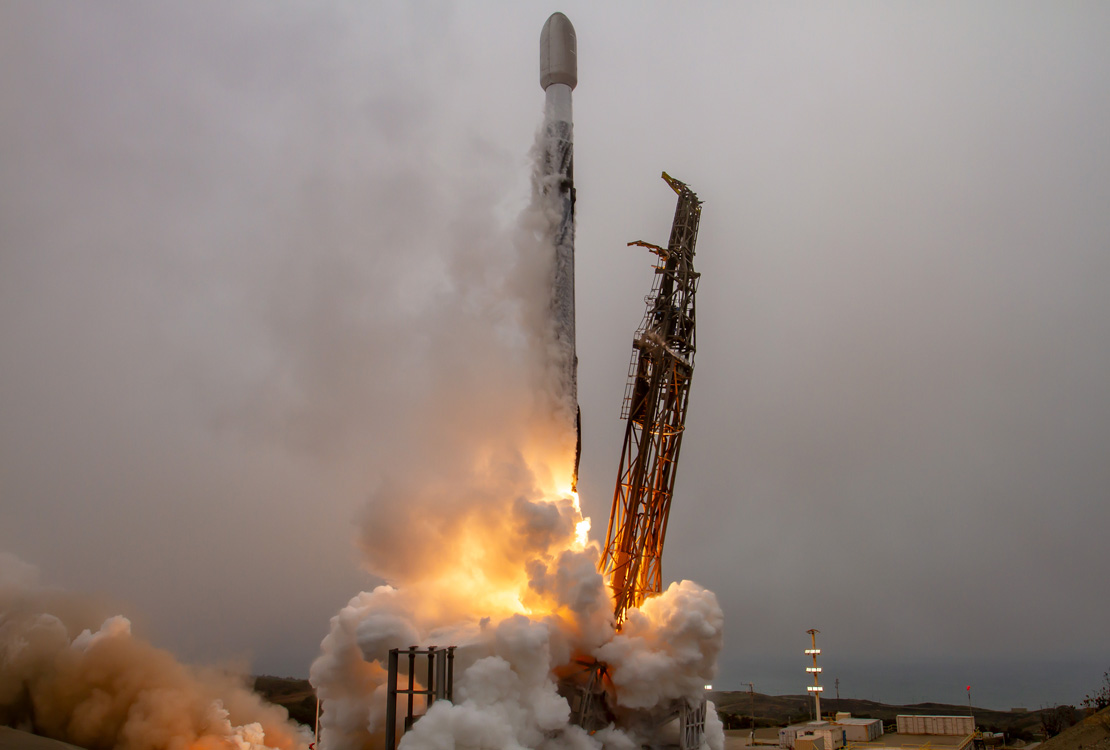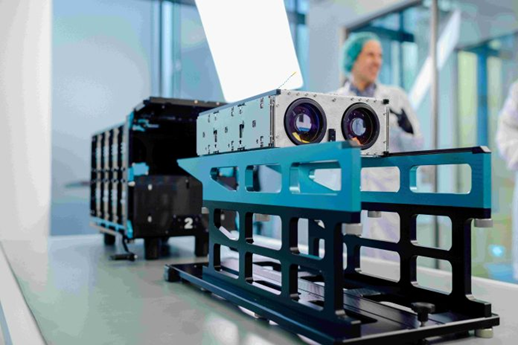Operations, commissioning and calibration activities of ESA-supported Greek In-Orbit Demonstration (IOD) CubeSat mission begin after successful launch

DUTHSat-2, the first of the Greek In Orbit Demonstration (IOD) CubeSat missions, has successfully launched from the Vandenberg Air Force Base in California, US, on 23 June on a SpaceX Falcon 9. The 6U CubeSat was one of many payloads aboard the Transporter-14 rideshare mission, which also carried 70 other payloads, including MicroSats, CubeSats and re-entry capsules. Early operations, commissioning and calibration activities of the spacecraft have begun.
From orbit, DUTHSat-2 will perform its core aim: to capture images in the visible and near infrared spectrum to capture information on soil moisture over land as well as the detection of both oil spills and water pollution – particularly from ship bilges – at sea.
DUTHSat-2 is also set to perform an in-orbit demonstration of the Essential TeleMetry (ETM) and housekeeping unit; the spacecraft version of a “black box”, which will allow operators to have visibility over the spacecraft’s health in case of failures of the main subsystems.
DUTHSat-2, which is led by the Democritus University of Thrace, and supported by the Greek companies Space Asics, Athena RC and Prisma Electronics SA, is part of the Greek National Small Satellite Programme. More specifically, it sits under the Greek CubeSats In-Orbit Validation (IOV) Projects, which include a total of seven IOV CubeSat missions, managed by the European Space Agency’s (ESA) Greek Connectivity Recovery and Resilience (RRF) programme, within ESA’s Connectivity and Secure Communications directorate.

The Greek National Small Satellite programme is executed under the auspices of the Hellenic Ministry of Digital Governance with the support of the General Secretariat of Telecommunications and Posts and the Hellenic Space Center. It is part of the National Recovery and Resilience Plan ‘Greece 2.0’, which is funded by the Recovery and Resilience Facility (RRF), core programme of the European Union’s NextGenerationEU.
"Our wish has become reality: DUTHSat-2 is in low Earth orbit, so now commissioning and more fun can start,” said Frédéric Rouesnel, Greek Connectivity RRF Project Manager at ESA. “This successful launch is testament to the valuable collaboration between ESA and a key Member State in our joint aim to boost Greece's capabilities in space.”
Prof. Konstantinos Karantzalos, Secretary General of Telecommunications and Posts, said: “DUTHSat-2 is the first satellite launched and successfully deployed as part of the National Microsatellite Programme. Congratulations to the Democritus University of Thrace, its industrial partners and ESA for reaching this milestone. Lots of hard work is still in the pipeline towards successfully exploiting DUTHSat-2 payloads as well as future assets to come. We are all proud to be part of this endeavour and wish the best for this as well as all upcoming missions.”
The Minister of Digital Governance, Dimitris Papastergiou, said: "We now have the first satellite bearing the Greek 'flag' in space, launched as part of the National Microsatellite Programme. The successful launch marks a significant milestone for the most research-focused and technology demonstration-oriented CubeSat programme to date in Greece. The CubeSat DUTHSat-2 is an outstanding example of what can be achieved when the Greek scientific community collaborates effectively with industry. Led by the Democritus University of Thrace and supported by ESA, this project highlights that Greece possesses the talent, expertise, and potential to play a meaningful role in the space sector. I would like to extend my congratulations to everyone who contributed to this effort. This marks only the beginning of Greece’s presence in space. The National Microsatellite Programme strengthens our country's capabilities in critical areas such as civil protection, environmental monitoring, and secure communications. Beyond expanding our operational capacities across various sectors, we are also fostering the development of a domestic space ecosystem – connecting scientists, institutions, research centres, universities, and Greek companies with global technological and innovation advancements."
As part of the project, there are a further six Greek IOD/IOV projects, culminating in ten more CubeSats that are scheduled to launch in October 2025 and February 2026 via the SpaceX Transporter 15 and Transporter 16 rideshare missions.


